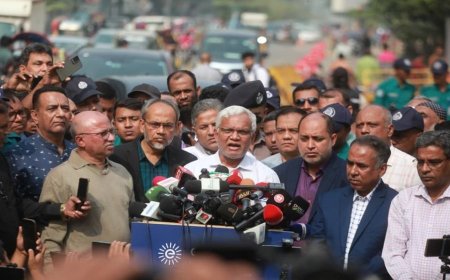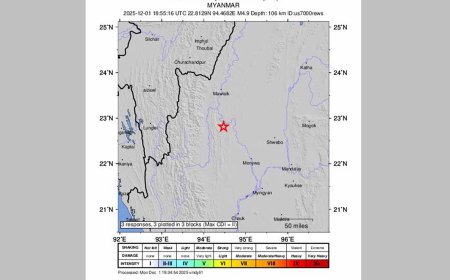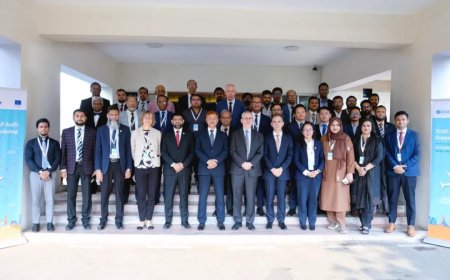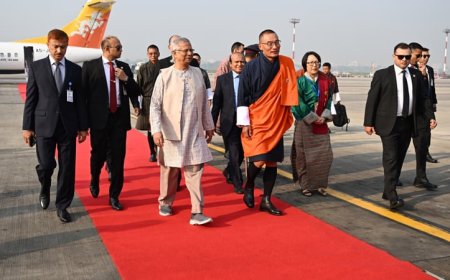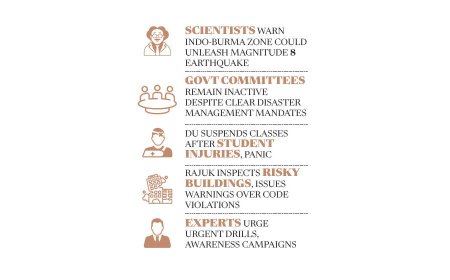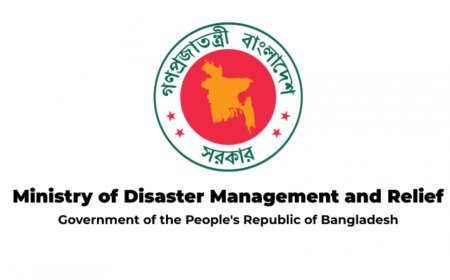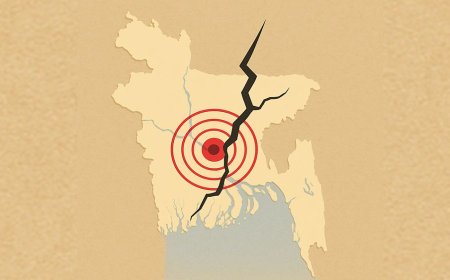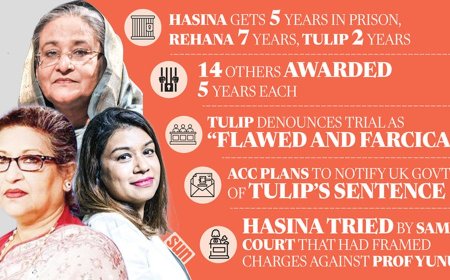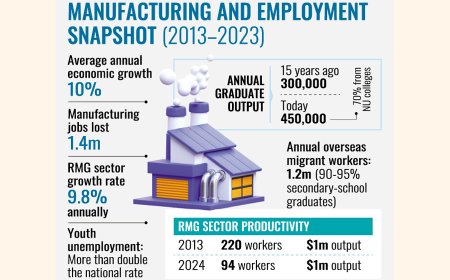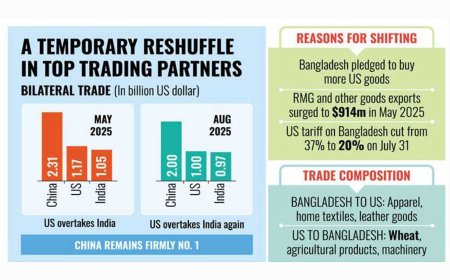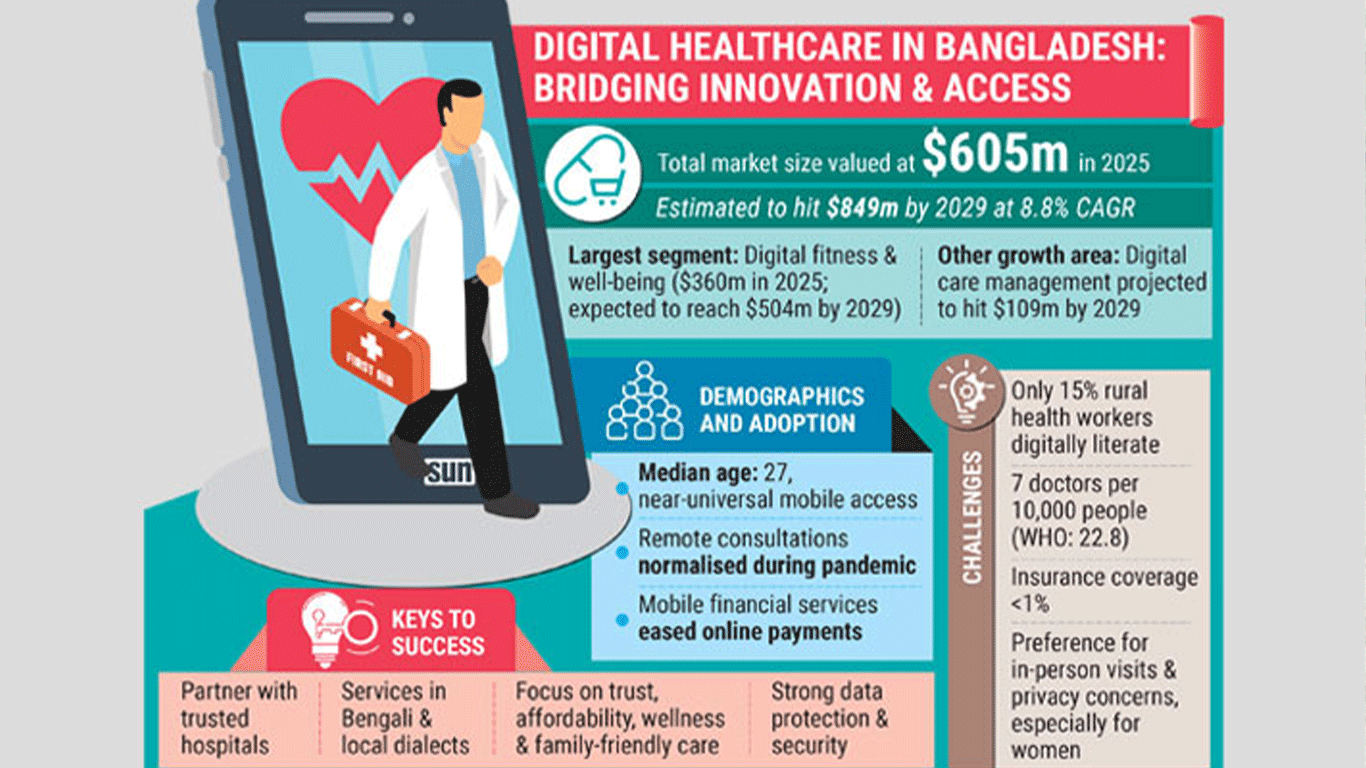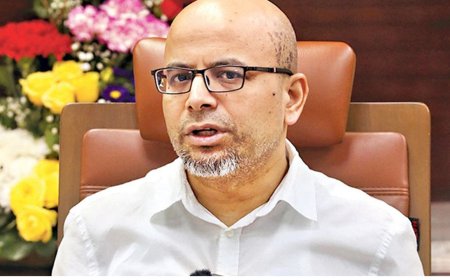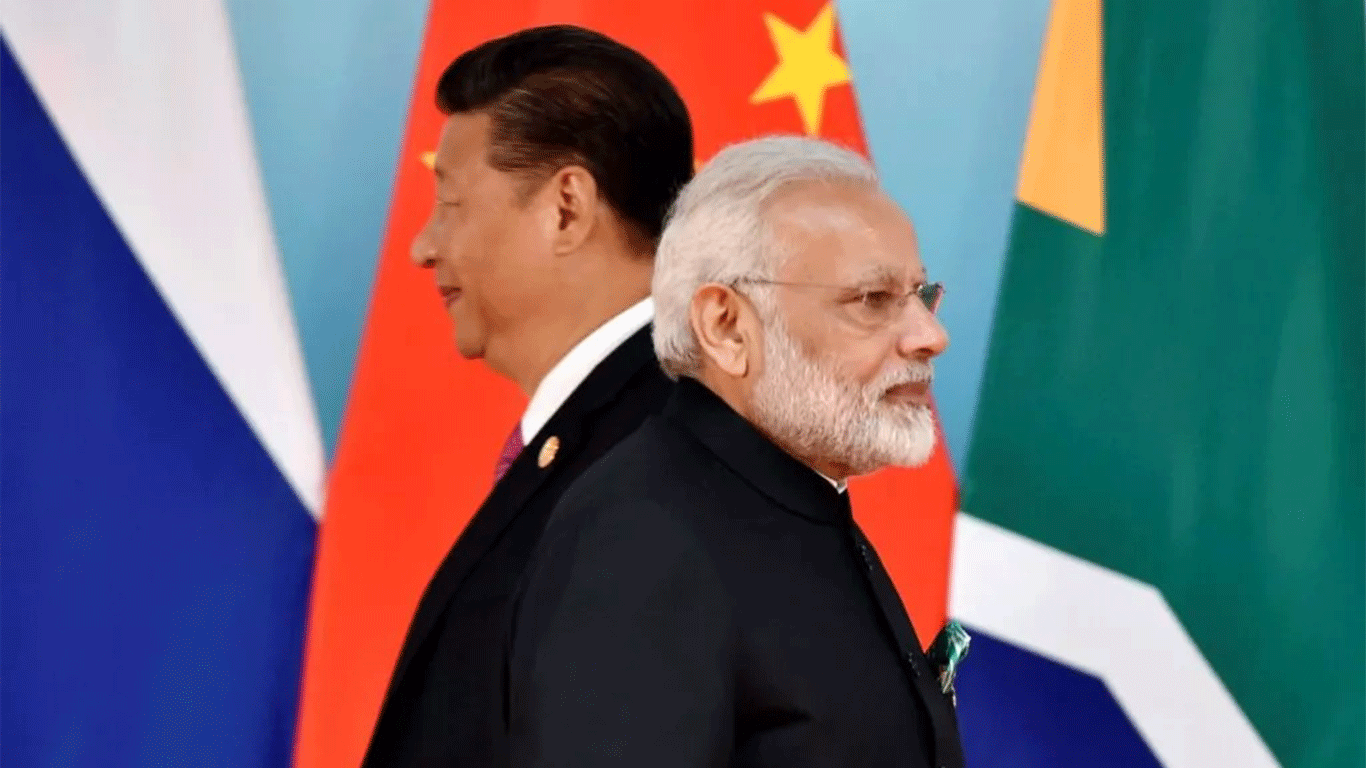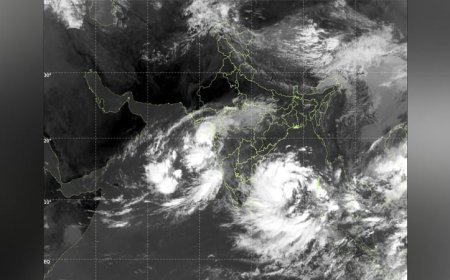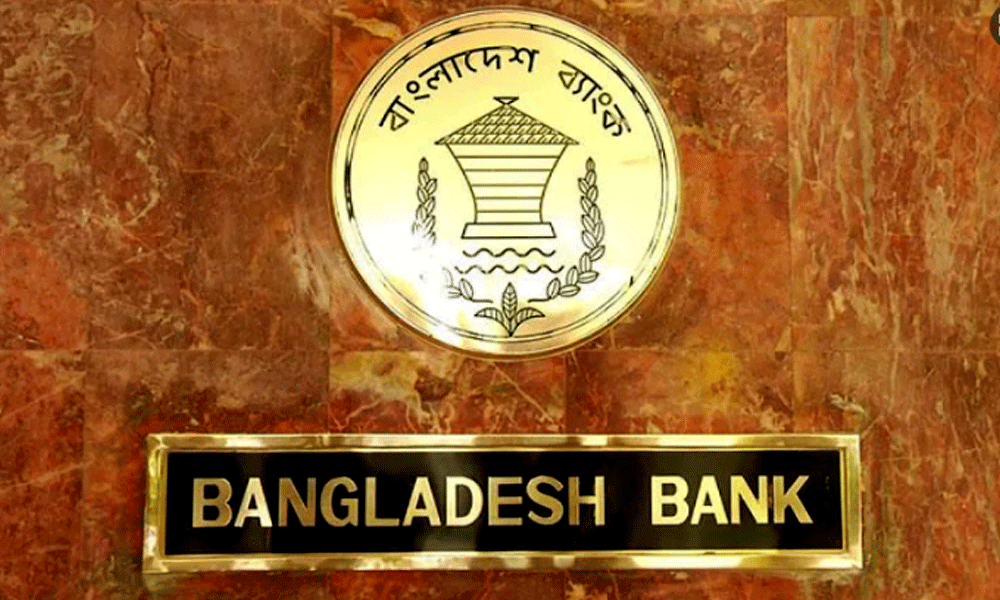The World Bank has updated its assessment of Bangladesh's economy, reducing its FY'25 GDP growth forecast to 4.1%, a significant decrease from the previous projection
The World Bank has updated its assessment of Bangladesh's economy, reducing its FY'25 GDP growth forecast to 4.1%, a significant decrease from the previous projection
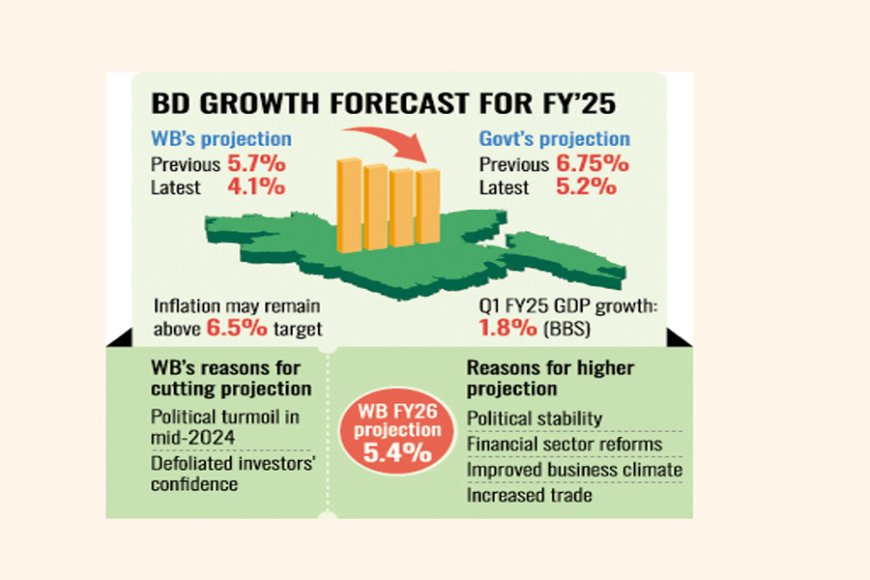
The latest World Bank reassessment of Bangladesh's economic outlook has revised the growth forecast for the current fiscal year to 4.1%, down by 1.6 percentage points from its earlier projection, citing various challenges.
In June 2024, the Washington-based institution had forecasted a 5.7% GDP growth for Bangladesh, according to its recent report. The revised projection reflects the impact of heightened political uncertainty following the July-August unrest and regime change, which are expected to dampen investment and industrial activity in the short term. This situation may further constrain economic growth, leading to a forecasted 4.1% expansion for FY2025, as outlined in the World Bank’s Global Economic Prospects (GEP) report released on Thursday night.
However, the Bank's outlook for FY2026 is more optimistic, with growth expected to recover to 5.4%, assuming political stability, successful financial sector reforms, a better business environment, and improved trade conditions. The easing of inflation is also anticipated to support private consumption in the coming months.
The Bangladesh Bureau of Statistics (BBS) has already painted a grim picture for the economy, reporting a meager 1.8% GDP growth in the first quarter (July-September) of FY2024-25, the slowest in 15 quarters or almost four years. This rate was even lower than the 0.93% recorded in Q2FY2021, during the peak of the COVID-19 pandemic. In the previous month, the Bangladesh government had already revised its GDP growth projection for FY2025 downward to 5.2% from an initial estimate of 6.75%.
The World Bank attributes the lower growth forecast to the political instability in mid-2024 and the resulting erosion of investor confidence. On inflation, the report notes that it is expected to remain above the target for FY2025, partly due to the lingering effects of earlier political upheavals. The government has set an inflation target of 6.5% for the current fiscal year.
Supply chain constraints, energy shortages, and import restrictions have weakened industrial activity and exacerbated inflationary pressures, further diminishing household purchasing power and slowing growth in the services sector.
Focusing on the broader South Asian region (SAR), the World Bank anticipates economic growth of 6.2% in both 2025 and 2026, largely driven by India’s strong performance. However, the region's growth will remain below the long-term average from 2000 to 2019. Excluding India, growth in SAR is projected to improve to 4.0% in 2025 and 4.3% in 2026. This downgrade for Bangladesh, amid policy uncertainty, contrasts with the upward revisions for other countries in the region.
India is expected to maintain the fastest growth among the world's largest economies, with projections of 6.7% growth in both FY2026 and FY2027. Meanwhile, per-capita income growth in South Asia is expected to remain robust at an average of 5.2% per year in 2025-26.
In contrast, Bangladesh, Pakistan, and Sri Lanka are expected to see weaker per-capita income growth in 2025-26 compared to the pre-pandemic decade, indicating slower poverty reduction and a lag in income catch-up to wealthier economies.
Despite India's strong performance, excluding it from the region's aggregate shows a slight increase in per-capita income growth from 2.5% in 2024 to 3.0% in 2026, which will contribute to a further reduction in poverty levels.
Fiscal deficits across the region are expected to stabilize, particularly with India excluded, as fiscal adjustments are offset by rising interest payments in Pakistan and infrastructure investment in Bangladesh.
Youth unemployment remains a significant concern across the region, with many countries, including Bangladesh, experiencing elevated levels of joblessness among young people. This issue is exacerbated by increased emigration, especially among skilled workers, due to limited employment opportunities in their home countries.
The World Bank also notes that while the South Asian region is less exposed to spillovers from weaker growth outside the region, slower-than-expected growth in major trading partners, particularly in Europe and the United States, could dampen economic activity in countries with strong trade links to these regions, such as Bangladesh. Europe accounts for approximately half of Bangladesh's total goods exports.
What's Your Reaction?









